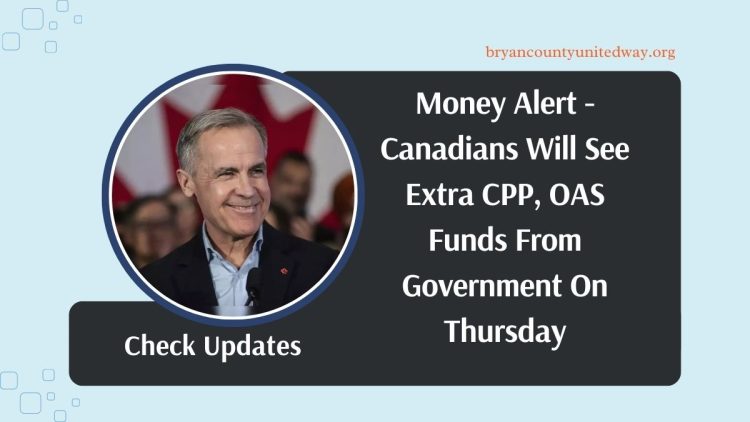Thousands of Canadians will see a boost in their bank accounts on Thursday, March 27, 2025, as the Canada Pension Plan (CPP) and Old Age Security (OAS) payments are released. These monthly benefits are critical for millions of retirees across the country, and this month’s deposit might come as a relief for many dealing with rising costs.
Let’s break down everything you need to know about these payments — including eligibility, how much you’ll get, and who qualifies.
What Is the Canada Pension Plan (CPP)?
The Canada Pension Plan (CPP) is a monthly taxable benefit designed to replace a portion of your income once you retire.
To be eligible for Canada Pension Plan , you must:
- Be at least 60 years old.
- Have made at least one valid contribution to the Canada Pension Plan — either from work or from credits after a split with a former spouse or partner.
You don’t have to be retired to receive CPP. In fact, working Canadians over 60 can still receive Canada Pension Plan and may qualify for Post-Retirement Benefits (PRB), which can increase their monthly payout.
- If you’re still working and under age 70, you’ll automatically continue contributing and receive higher payments the following year.
- After age 65, you can choose to stop contributing.
- At age 70, contributions stop, even if you’re still working.
What Is Old Age Security (OAS)?
The Old Age Security (OAS) pension is another monthly benefit for seniors aged 65 or older.
Eligibility requirements include:
- You must be a Canadian citizen or legal resident.
- You must have lived in Canada for at least 10 years since age 18.
- If you’re living abroad, you need to have resided in Canada for at least 20 years after turning 18.
Unlike CPP, your employment history doesn’t affect OAS eligibility. You can still receive it if you’ve never worked or are still working.
How Much Will You Receive?
The amount you get from CPP or OAS varies depending on your age, income, and contribution history. Below are the maximum monthly amounts as of March 2025:
| Benefit Type | Maximum Monthly Amount (March 2025) | Eligibility Age |
|---|---|---|
| CPP Retirement Pension | $1,306.57 | 60+ |
| OAS (Age 65–74) | $727.67 | 65+ |
| OAS (Age 75+) | $800.44 | 75+ |
| Post-Retirement Benefit (PRB) | Varies by contribution | Under 70 and working |
Note: Most recipients receive less than the maximum, depending on their contribution history and when they started receiving benefits.
When Will You Get Paid?
Both CPP and OAS are scheduled for Thursday, March 27, 2025. If you have direct deposit set up, your payment should appear in your bank account on the same day.
Here are the upcoming 2025 payment dates:
| Month | CPP & OAS Payment Date |
|---|---|
| March | March 27, 2025 |
| April | April 28, 2025 |
| May | May 28, 2025 |
| June | June 26, 2025 |
| July | July 29, 2025 |
How to Apply or Check Eligibility
- If you’re already receiving CPP or OAS, there’s nothing you need to do — the payment will come automatically.
- If you’re turning 60 (CPP) or 65 (OAS) soon, you should apply several months in advance to avoid delays.
- You can manage your benefits and track your payments via your online government account or by visiting your local service center.
This March 27 is more than just another Thursday — it’s payday for millions of Canadians. Whether you’re receiving CPP, OAS, or both, make sure you understand your eligibility and benefit details to get the most out of your retirement income.
With increasing costs of living, these payments offer essential support to older Canadians navigating financial challenges.
FAQs
Can I get both CPP and OAS payments?
Yes. If you meet the individual requirements for both programs, you can receive CPP and OAS simultaneously.
Is the payment amount the same for everyone?
No. CPP is based on your contribution history, while OAS depends on age and residency. Your payment will vary based on these factors.
Will my payment increase over time?
Yes. CPP and OAS are adjusted regularly to reflect inflation and cost-of-living changes.




